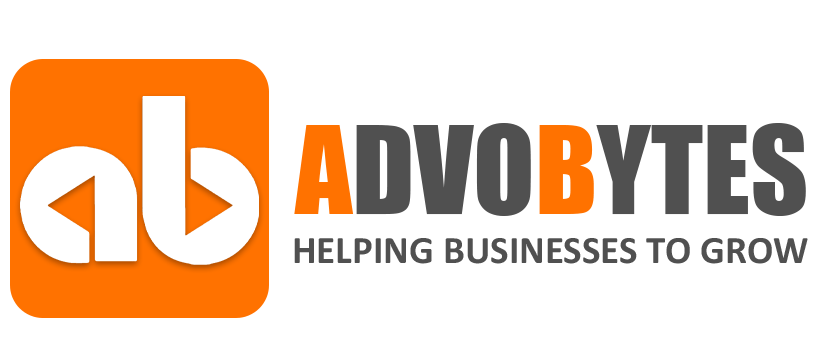Facebook Ads is an advertising platform offered by Facebook that enables businesses to create and publish ads on the social media platform. With over 2.8 billion monthly active users, Facebook Ads provides businesses with a powerful tool to reach their target audience, drive engagement, and achieve their marketing objectives.
Here’s an overview of Facebook Ads and how it works:
- Ad Creation: Businesses can create ads on Facebook Ads Manager, a comprehensive tool that allows them to design, target, and manage their ad campaigns. Advertisers can choose from various ad formats, including image ads, video ads, carousel ads, slideshow ads, and more, depending on their marketing objectives and creative preferences.
- Targeting Options: One of the key features of Facebook Ads is its robust targeting options. Advertisers can target users based on demographics such as age, gender, location, language, and interests. Additionally, businesses can create custom audiences based on factors like website visitors, email subscribers, app users, and engagement with their Facebook Page or posts.
- Budgeting and Bidding: Facebook Ads offers flexible budgeting options, allowing businesses to set their advertising budget based on their objectives and financial resources. Advertisers can choose from different bidding strategies, including cost-per-click (CPC), cost-per-thousand-impressions (CPM), or cost-per-action (CPA), depending on their campaign goals.
- Ad Placement: Facebook Ads allows businesses to choose where their ads will be displayed across Facebook’s family of apps and services, including Facebook, Instagram, Audience Network, and Messenger. Advertisers can select automatic placements or manually choose specific platforms and placements based on their audience’s behavior and preferences.
- Ad Creative and Messaging: Businesses can customize their ad creative and messaging to resonate with their target audience and convey their brand message effectively. Advertisers can experiment with different ad formats, headlines, ad copy, visuals, and calls-to-action (CTAs) to optimize ad performance and drive desired actions.
- Measurement and Analytics: Facebook Ads provides advertisers with comprehensive analytics and reporting tools to track the performance of their ad campaigns in real-time. Advertisers can monitor key metrics such as reach, impressions, clicks, conversions, and return on investment (ROI) to evaluate campaign effectiveness and make data-driven decisions to optimize ad performance.
- Audience Insights: Facebook Ads offers valuable audience insights and demographic data about users who engage with ads, allowing businesses to better understand their target audience’s behavior, preferences, and interests. Advertisers can use this data to refine their targeting strategies and create more personalized and relevant ad campaigns.
- Optimization and Testing: Businesses can optimize their Facebook ad campaigns through A/B testing, experimentation, and continuous refinement. Advertisers can test different ad creatives, targeting options, ad placements, and bidding strategies to identify what resonates best with their audience and drive the desired outcomes.
- Remarketing and Retargeting: Facebook Ads allows businesses to re-engage with users who have previously interacted with their brand or visited their website through remarketing and retargeting campaigns. Advertisers can target these warm leads with personalized ads to nurture them through the sales funnel and drive conversions.
- Customer Support and Resources: Facebook Ads provides businesses with access to customer support, educational resources, and best practices to help them get the most out of their ad campaigns. Advertisers can access tutorials, guides, case studies, and webinars to learn how to optimize their ad strategy and achieve their advertising goals on Facebook.

In summary, Facebook Ads is a powerful advertising platform that enables businesses to reach and engage with their target audience effectively. With its advanced targeting options, flexible budgeting and bidding strategies, comprehensive analytics, and optimization tools, Facebook Ads empowers businesses to create highly targeted, personalized, and impactful ad campaigns that drive results and achieve their marketing objectives.
Mastering Facebook Marketing: Top 10 Strategies for Success
In today’s digital landscape, Facebook has become more than just a social networking platform; it’s a powerful marketing tool that businesses can leverage to reach and engage with their target audience. With over 2.8 billion monthly active users, Facebook offers unparalleled opportunities for businesses to increase brand awareness, drive website traffic, generate leads, and boost sales. To help businesses maximize their marketing efforts on Facebook, here are ten top strategies for mastering Facebook marketing:
- Create a Compelling Facebook Page: The foundation of any successful Facebook marketing strategy is a well-optimized Facebook Page. Businesses should ensure their Page is complete with all relevant information, including a profile picture, cover photo, description, contact details, and business hours. Additionally, businesses should use keywords in their Page name and description to improve discoverability and optimize their Page for search engines.
- Publish High-Quality Content: Content is king on Facebook, and businesses should focus on creating and sharing high-quality, engaging content that resonates with their target audience. This includes a mix of informative articles, eye-catching visuals, entertaining videos, and interactive polls or quizzes. By providing value to their audience, businesses can increase engagement, build brand loyalty, and foster meaningful relationships with their followers.
- Utilize Facebook Ads: Facebook offers a robust advertising platform that allows businesses to target specific audiences, set advertising objectives, and track campaign performance. Businesses should leverage Facebook Ads to reach their target audience effectively, whether it’s to increase brand awareness, drive website traffic, or generate leads. By experimenting with different ad formats, targeting options, and ad creative, businesses can optimize their ad campaigns for maximum impact.
- Engage with Your Audience: Engagement is key to building a thriving community on Facebook. Businesses should actively engage with their audience by responding to comments, messages, and mentions promptly. Additionally, businesses can initiate conversations by asking questions, soliciting feedback, and encouraging user-generated content. By fostering two-way communication, businesses can strengthen their relationship with their audience and increase brand loyalty.
- Harness the Power of Facebook Groups: Facebook Groups provide businesses with a valuable opportunity to connect with like-minded individuals, foster community, and share valuable content. Businesses can create their own Facebook Groups or join existing groups relevant to their industry or niche. By participating in group discussions, sharing expertise, and providing value to group members, businesses can establish themselves as thought leaders and gain visibility within their target audience.
- Optimize Posting Frequency and Timing: Posting frequency and timing play a crucial role in maximizing reach and engagement on Facebook. Businesses should experiment with different posting schedules to identify the optimal times to reach their target audience. Additionally, businesses should avoid overposting, as this can lead to audience fatigue and decreased engagement. Instead, businesses should focus on quality over quantity and prioritize sharing content that resonates with their audience.
- Run Contests and Giveaways: Contests and giveaways are an effective way to boost engagement, increase brand awareness, and grow your Facebook following. Businesses can run contests that encourage user participation, such as photo caption contests, voting contests, or trivia quizzes. By offering attractive prizes and incentives, businesses can incentivize participation and generate excitement among their audience.
- Leverage User-Generated Content: User-generated content (UGC) is a powerful asset that businesses can leverage to showcase their brand authenticity and build social proof. Businesses should encourage their audience to create and share content related to their brand, products, or services. This can include customer testimonials, product reviews, user-generated photos or videos, and social media shoutouts. By highlighting UGC on their Facebook Page, businesses can foster a sense of community and trust among their audience.
- Monitor and Analyze Performance Metrics: Monitoring and analyzing performance metrics is essential for measuring the effectiveness of your Facebook marketing efforts. Businesses should regularly review key metrics such as reach, engagement, click-through rate (CTR), conversion rate, and return on investment (ROI). By identifying trends, patterns, and areas for improvement, businesses can refine their strategy, optimize their campaigns, and achieve better results over time.
- Stay Updated on Facebook Algorithm Changes: Facebook’s algorithm is constantly evolving, impacting the visibility and reach of organic content on the platform. Businesses should stay updated on Facebook algorithm changes and adjust their strategy accordingly. This includes understanding factors that influence algorithmic ranking, such as engagement, relevancy, and authenticity. By staying informed and adapting to algorithm changes, businesses can maintain their competitive edge and maximize their reach on Facebook.

In conclusion, mastering Facebook marketing requires a strategic approach that focuses on creating engaging content, leveraging Facebook Ads, engaging with your audience, and optimizing your posting strategy. By implementing these top strategies, businesses can effectively reach their target audience, increase brand awareness, and drive meaningful engagement on Facebook.




































